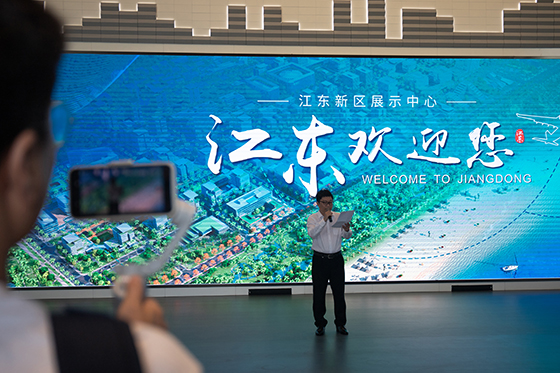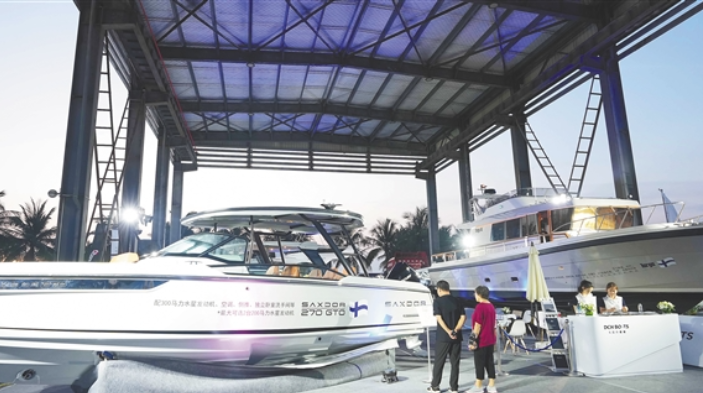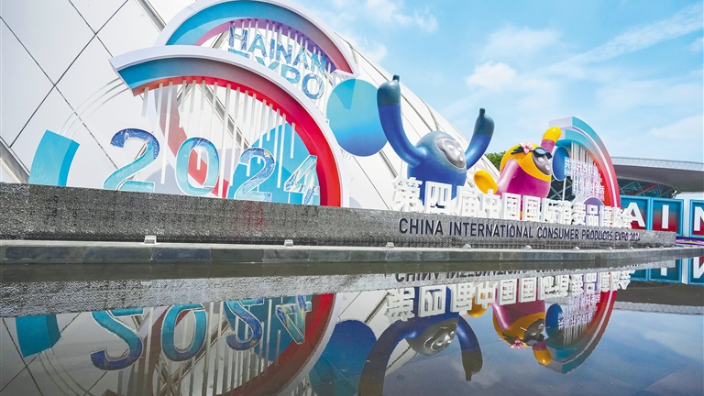By continuing to browser our site and use the services you agree to our use of cookies, Privacy Policy and Terms of Use. You can change your cookie settings through your browser.
On June 10, 2021, China passed a law on the Hainan Free Trade Port (FTP), making institutional arrangements for the development of the Hainan FTP at the national legislative level.
The arrangements make Hainan Island China’s largest free trade area.
Thanks to its proximity to Southeast Asia, Hainan has unique advantages as a free trade port. With a population of more than 9 million, Hainan has about 2 million people more than Hong Kong (and almost twice as many as Singapore), while the 35,400-square-km Hainan FTP is 27 times the size of the other Free Trade Zones on the Chinese mainland. Hainan is 49 times the size of Singapore and nine times that of Dubai.
This isn’t the first time however that Hainan has had a key role to play along major trade routes.

Haikou Jiangdong New Area Exhibition Centre
Based on the even older spice and jade networks of Southeast Asia, Sri Lanka and the Indian Ocean, the ancient Maritime Silk Road began to develop around the 2nd century BCE and flourished until the 15th century CE. At its height it connected China, Southeast Asia, the Indian subcontinent, the Arabian Peninsula, Somalia, and Egypt, even stretching all the way up into Europe.
According to historical records, Hainan Island was a key transit point where ships could replenish supplies and also for trade and cargo transportation between the mainland and countries along the ancient Silk Road.

Haikou Jiangdong New Area Exhibition Centre.
On June 1, 2020 Chinese authorities released a master plan for the Hainan free trade port, aiming to develop Hainan Province into a globally-influential high-level Free Trade Port by the middle of the century.
In the year following the announcement, the actual use of foreign investment in Hainan totaled about 3 billion U.S. dollars, doubling the figure of 1.5 billion U.S. dollars for 2019.
The volume of foreign capital in actual use in Hainan from January - August 2021 was $1.907 billion, an increase of 386% compared to the same period last year, as reported by China's Ministry of Commerce.
According to a document published on the official website of the Ministry of Commerce, there were 1,367 enterprises with foreign capital on the island during this period, an increase of 3.4 times the previous year’s figures.
Hainan is currently attracting major investment from Macao SAR, Hong Kong SAR, and Taiwan.
Data from the United Front Work Department of the CPC Hainan Provincial Committee shows that 781 Hong Kong-funded enterprises have been established in Hainan since 2018, accounting for 41 percent of the overseas-funded companies set up in the province. Investment capital from Hong Kong hit $4.75 billion, or 78.5 percent of overseas investment flowing into the Hainan FTP during that period.
The Haikou Jiangdong New Area (JDNA) is one of 11 key parks at the forefront of reform and opening up in Hainan. The park is located on the east coast of Haikou City, the capital of China's Hainan Province, with a planned land area of 298 square kilometers.
Jiangdong’s overall positioning is as an innovation area and pilot zone for deepening reform and opening-up on all fronts as well as a display area and pilot national ecological zone, an experience zone, an international tourism consumer center demonstration area, and a major national strategic logistics zone.

The Haikou Jiangdong New Area has a wetland area of about 90 square kilometers
In the JDNA, 70% of the area is designated as blue (water resources) and green (nature areas). The region is rich in ecological resources. It boasts a 31 kilometer long coastline and a wetland area measuring around 90 square kilometers, which is criss-crossed by a dense river network. It’s quite rare to find a city anywhere in the world with such an excellent combination of an outstanding natural environment and high-end business.
The region has excellent transportation infrastructure including the Haikou Meilan International Airport and the round island high-speed railway. Meilan station is part of China’s global entry network and an important fulcrum for connecting to “the Belt and Road”.
The area also hosts a number of international education facilities such as the British Harrow School, as well as the affiliated school of Beijing Normal University, Huandao School, and Guilinyang University City.

Harrow School, Haikou
The education area is focusing on building comprehensive functional areas such as a consulate area, an international boutique exhibition center, and an urban cultural exhibition area to stimulate the vitality of urban development.
The 21st Century Maritime Silk Road places emphasis on stronger economic cooperation as well as joint cooperation in infrastructure projects. It aims to strengthen the maritime economy as well as increasing environmental, technical, and scientific cooperation.
As the Hainan Free Trade Port develops into the middle of this century, Haikou and the Haikou Jiangdong New Area are going to have a major role to play.
16 New Measures Set to Make Life in Hainan for Foreigners Easier
08:10, 18-April-20244th CICPE Helps Hainan’s Yacht Industry Development
03:37, 18-April-2024New friends, new opportunities at the Hainan Expo
03:37, 18-April-2024Fáilte go Hainan! FTP Becomes Top Destination for Irish Firms
03:37, 18-April-2024Michael's EV Journey in Haikou
03:37, 18-April-2024OCOs on Expo: Inira’s magical Hainan Expo journey
06:01, 17-April-2024By continuing to browser our site and use the services you agree to our use of cookies, Privacy Policy and Terms of Use. You can change your cookie settings through your browser.





